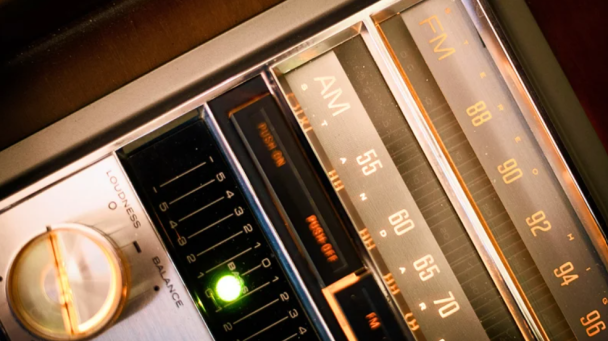To accommodate analog AM radio, certain carmakers may need to scrap advanced safety features.
John Bozzella, President and CEO, Alliance for Automotive Innovation
Gary Shapiro, CEO, Consumer Technology Association
Linda Moore, CEO, TechNet
Albert Gore, Executive Director, Zero Emission Transportation Association
As the leaders of four organizations representing North America's tech companies, auto manufacturers and suppliers, we must address federal legislation that would take us a century backward and impede safety advancements and innovation: a mandate to include analog AM radio in all new vehicles.
The four of us hold a range of views. But we're all aligned on one common principle: Innovation is key to American leadership. That's why we oppose the AM Radio for Every Vehicle Act.
While AM radio has created great memories and value for many, forcing it into all new vehicles — whether Americans want it or not — poses some big drawbacks.
To accommodate analog AM radio as a primary design requirement, certain carmakers may need to scrap advanced safety features, with engineers having to prioritize outdated technology over current or future safety innovations. If the goal is to save American lives, Congress should encourage automakers to focus on innovative technologies like advanced driver-assistance systems, autonomous vehicles and collision avoidance systems that actually reduce car accidents and fatalities.
A mandate would also kneecap American automakers' ability to compete in a rapidly evolving and global automotive landscape. In 2023, China became the world's leading vehicle exporter, a position previously held by U.S. manufacturers. American automakers have invested in developing electric and autonomous vehicles, which rely on cutting-edge electronics and software to optimize performance, efficiency and user experience. An analog AM radio mandate adds unnecessary complexities to the design and manufacturing process of these vehicles and harms our global competitiveness.
Moreover, such a mandate would be a barrier to the success of America's growing electric vehicle industry. AM radio signals are highly susceptible to interference from the electric motors, sensors and other electronic components found in EVs. That's why AM radio reception in EVs is often riddled with static noise. While EV makers could reduce interference by installing additional shielding, there is no way to resolve this issue completely. These additional components would also increase production costs. For carmakers leading the way in EV deployment, a federal analog AM radio mandate would require a complete vehicle redesign. According to a study from the Center for Automotive Research in Ann Arbor, Mich., the proposed mandate would cost manufacturers $3.8 billion over seven years, slowing EV development and efforts to modernize transportation.
At the same time, AM radio listenership is on the decline. That's in part because automakers have invested heavily in infotainment systems featuring advanced technologies including Bluetooth, voice recognition, satellite radio and smartphone integration. These systems provide consumers with a superior audio experience compared with traditional analog AM radio and also help deliver hands-free operability to drivers.
Flawed argument for AM
Of course, AM radio is still an important feature for many Americans, and the great news is that consumers will still be able to purchase a vehicle with analog AM radio. At current car replacement rates, even if analog AM radio were phased out tomorrow — which no one is suggesting — it would be decades before it disappeared from all cars on American roads.
In advancing the bill, proponents have focused primarily on a public safety argument centered around access to emergency alerts and local AM radio broadcast warnings. But is it fact-based?
Definitely not for emergency alerts. Today, the Federal Emergency Management Agency-run Integrated Public Alert & Warning System integrates many forms of communication, pushing emergency alerts through digital and analog AM/FM radio, Internet-based radio, satellite radio and cellular networks. This multilayered approach allows emergency information to reach the public through their preferred communication channels. As the data shows, that's increasingly not analog AM radio. In a study completed by the Consumer Technology Association, just 1 percent of U.S. adults heard emergency alerts via AM radio only during a nationwide 2023 test, while 95 percent received the alert on their phones.
It is also likely (we don't know — nor does Congress) that many if not most AM radio stations are not staffed much of the time, especially at night, the only time AM has broader coverage than FM. Mandating foreign-made, outdated technology in every car when it will provide little safety value is inconsistent with good public policy.
Seek alternatives
If this push was truly about public safety, Congress might consider an alternative: legislation that would ensure cars can receive emergency alerts without locking manufacturers into specific technologies. Lack of action on that front leads to only one conclusion: Congress simply isn't concerned with the expense of future innovation, higher vehicle prices or the competitiveness of the American auto industry.
This proposed AM radio mandate is an unprecedented, costly and unnecessary "solution" in search of a problem. Instead, Congress should refocus on encouraging the adoption of emerging technologies that enhance vehicle safety and improve emergency communication systems. Promoting innovation in advanced safety features, autonomous vehicles and rural broadband infrastructure would provide a more effective and forward-thinking approach to public safety.
*Originally appeared in Automotive News (Guest Commentary: Why a Congressional AM Radio Mandate is a Bad Idea: June 24, 2024)

